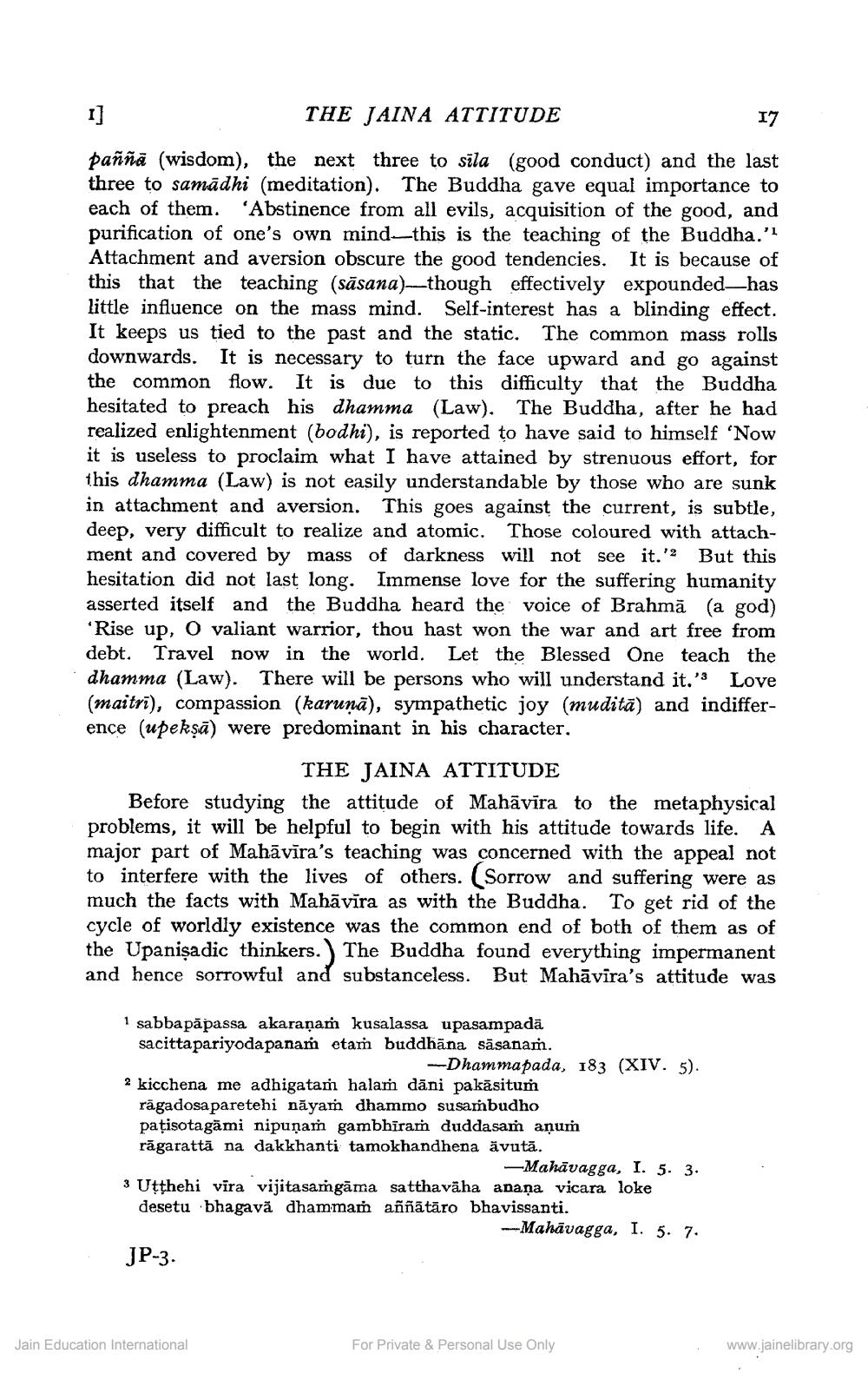________________
THE JAINA ATTITUDE
17
paññā (wisdom), the next three to sila (good conduct) and the last three to samadhi (meditation). The Buddha gave equal importance to each of them. Abstinence from all evils, acquisition of the good, and purification of one's own mind this is the teaching of the Buddha.'1 Attachment and aversion obscure the good tendencies. It is because of this that the teaching (sāsana)—though effectively expounded_has little influence on the mass mind. Self-interest has a blinding effect. It keeps us tied to the past and the static. The common mass rolls downwards. It is necessary to turn the face upward and go against the common flow. It is due to this difficulty that the Buddha hesitated to preach his dhamma (Law). The Buddha, after he had realized enlightenment (bodhi), is reported to have said to himself Now it is useless to proclaim what I have attained by strenuous effort, for this dhamma (Law) is not easily understandable by those who are sunk in attachment and aversion. This goes against the current, is subtle, deep, very difficult to realize and atomic. Those coloured with attachment and covered by mass of darkness will not see it.' But this hesitation did not last long. Immense love for the suffering humanity asserted itself and the Buddha heard the voice of Brahmā (a god) 'Rise up, O valiant warrior, thou hast won the war and art free from debt. Travel now in the world. Let the Blessed One teach the dhamma (Law). There will be persons who will understand it.'3 Love (maitri), compassion (karunā), sympathetic joy (muditā) and indifference (upekşā) were predominant in his character
THE JAINA ATTITUDE Before studying the attitude of Mahāvīra to the metaphysical problems, it will be helpful to begin with his attitude towards life. A major part of Mahāvīra's teaching was concerned with the appeal not to interfere with the lives of others. Sorrow and suffering were as much the facts with Mahāvīra as with the Buddha. To get rid of the cycle of worldly existence was the common end of both of them as of the Upanisa dic thinkers. The Buddha found everything impermanent and hence sorrowful and substanceless. But Mahāvira's attitude was
1 sabbapāpassa akaraṇam kusalassa upasampada sacitta pariyoda panam etam buddhāna sāsanam.
-Dhammapada, 183 (XIV. 5). 2 kicchena me adhigatam halam dāni pakāsitum rāgadosa paretehi nāyan dhammo susambudho pațisotagāmi nipuņam gambhīram duddasam anum rāgarattā na dakkhanti tamokhandhena ävută.
-Mahāvagga, I. 5. 3. 3 Utthehi vira vijitasargāma satthaväha apaņa vicara loke desetu bhagavă dhammam aññātāro bhavissanti.
-Mahāvagga, I. 5. 7. JP-3.
Jain Education International
For Private & Personal Use Only
www.jainelibrary.org




